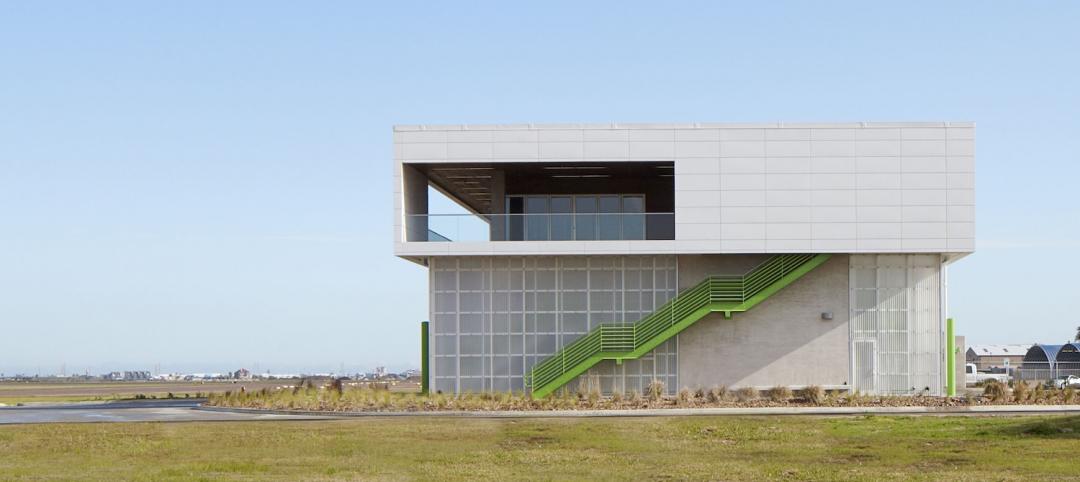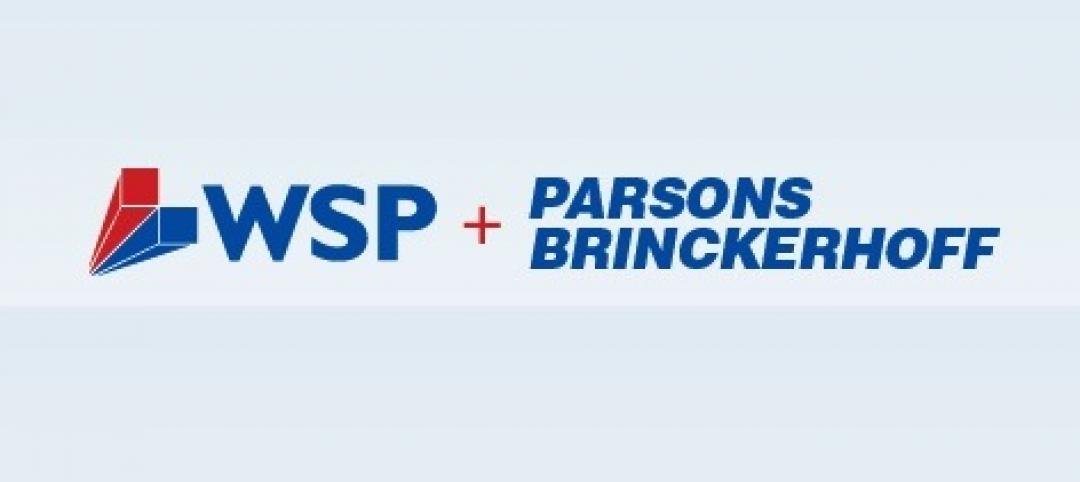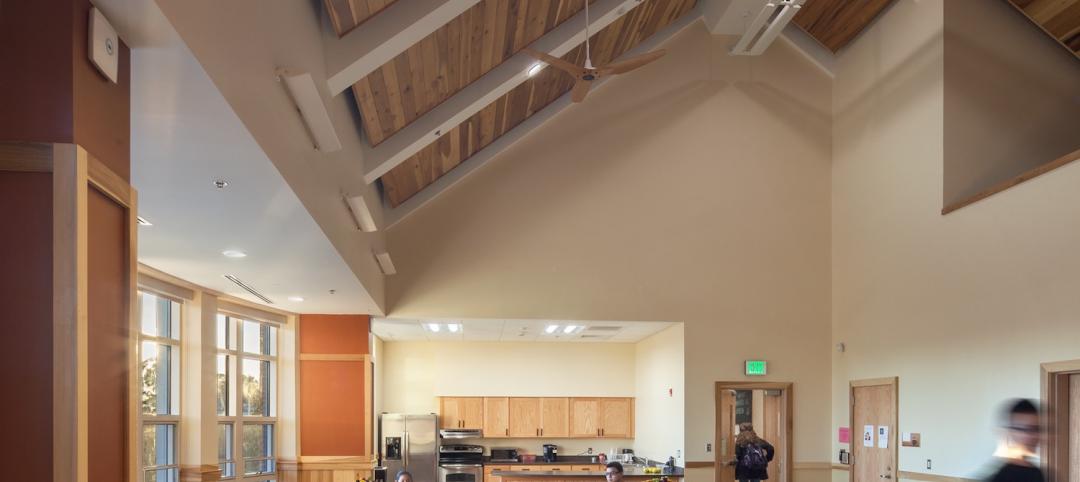The healthcare sector faces grave financial uncertainties, even with the June 28 Supreme Court decision upholding the Affordable Care Act. To help us sort out the factors impacting this lucrative segment, we turned to Philip Tobey, a Fellow of both the AIA and the American College of Healthcare Architects and Senior Vice President with SmithGroupJJR.
“Health industry providers legitimately expect significant efficiencies and lower costs for design and construction services, to go along with the economies that they themselves face with tighter and value-based reimbursement terms under health reform,” says Tobey, a member of Building Design+Construction’s Editorial Board.
In other words, AEC firms are going to have to share some of their healthcare clients’ pain. The drive for greater operational efficiency and lower cost in healthcare will be unrelenting, with bundled payments and shared savings models in lieu of traditional fee-for-service reimbursement forcing healthcare providers to eliminate wasteful practices.
Tobey sees three major trends emerging: 1) growing emphasis on ambulatory care, 2) medical systems integration, and 3) the “bundling/unbundling” of services.
SCROLL DOWN FOR GIANTS 300 TOP 25 AEC HEALTHCARE FIRM RANKINGS
1. PUSHING AMBULATORY CARE FACILITIES OUT
“The trend to push services out of the hospital into ambulatory settings will only intensify,” says Tobey. He notes, however, that there will be an “overwhelming need” to expand the front end of delivery—primary care, urgent care, and emergency departments—and to rationalize procedural and imaging resource capacity. At the same time, freestanding surgery and imaging centers may not be as prevalent in the future, and may need to be consolidated into larger hospital centers.
“Hospitals are not going away,” says Tobey, even though inpatient volumes are predicted to fall 5%, vs. 30% growth in outpatient volume. The sheer increased volume of patients, especially as baby boomers age, will inevitably drive up acute-care admissions. In the face of these seemingly countervailing trends, says Tobey, “The need to renovate outdated or obsolete facilities will be a strong driver in the healthcare business.”
2. INTEGRATING MEDICAL SYSTEMS MORE TIGHTLY
Tobey says the need for greater efficiency and ever-higher quality of care are not new goals for medical care or medical design, but hospital systems are being encouraged further by healthcare reform to streamline processes, with more mergers, acquisitions, and hospital-physician staff integrations on the horizon. “The industry’s even been talking about including services like long-term care and home care into this integrated approach,” he says.
Although there will always be a need for acute-care hospitals, Tobey sees a possible shift toward more community-based portals. As health systems continue to integrate, they will rely more and more on treatment venues outside the hospital to provide patients with coordinated preventive care and treatment for chronic conditions.
The IT component of hospital systems is already a natural for systems integration. “Providing the right information where it’s needed is essential for clinical care,” says Tobey, who foresees greater implementation of electronic medical records.
Are hospitals ready for lean?
“Everybody’s talking about it, but many hospital owners are wary of taking on lean,” says SmithGroupJJR’s Phil Tobey, FAIA, FACHA, whose firm is on the team for Sutter Health’s California Pacific Medical Center in San Francisco, the largest lean project in the U.S. “You have Sutter, which is totally lean, then you have clients who tell us not even to mention the word,” he says. “Others are applying the basic principles of lean construction without carrying the heavy weight of all that lean entails.”
Applying Lean/Six Sigma principles to healthcare, says Jeffrey C. Stouffer, AIA, a Principal with HKS, would result in “measurable outcomes and even risk sharing as part of the design and construction process” by eliminating unnecessary waste in construction and operations and increasing staff efficiency and safety, while reducing energy and staff costs for the hospital.
3. UNBUNDLING/BUNDLING OF HEALTHCARE SERVICES
Healthcare providers are “decanting” non-core functions—services like pharmacy, lab support, materials handling, and environmental management—from the mother ship into cheaper B-occupancy buildings. “Anything soft, anything that’s not high-tech, is being taken out,” says Tobey. “That’s the unbundling.”
However, once the unbundling of less-intense services has been accomplished, says Tobey, some hospital systems are opting to bundle the remaining hospital space, by placing beds back on top of the structure’s base diagnostic and support block, instead of having the traditional diagnostic/support chassis with attached nursing wings.
“You unbundle and decant the support services, then take the remaining high-intensity hospital base and put the beds on top,” says Tobey. A recent study for a 100-bed community hospital found that following such a scheme would result in 39% savings in construction costs per bed. +
TOP 25 HEALTHCARE SECTOR ARCHITECTURE FIRMS
| Rank | Company | 2011 Healthcare Revenue ($) |
| 1 | HDR Architecture | 205,200,000 |
| 2 | HKS | 124,736,964 |
| 3 | Perkins+Will | 122,895,589 |
| 4 | Cannon Design | 121,000,000 |
| 5 | NBBJ | 116,401,000 |
| 6 | HOK | 102,695,248 |
| 7 | SmithGroupJJR | 74,600,000 |
| 8 | RTKL Associates | 68,421,405 |
| 9 | Perkins Eastman | 63,700,000 |
| 10 | Hammel, Green and Abrahamson | 61,900,000 |
| 11 | ZGF Architects | 54,338,355 |
| 12 | Heery International | 48,583,000 |
| 13 | HMC Architects | 42,715,899 |
| 14 | PageSoutherlandPage | 38,670,000 |
| 15 | IBI Group | 37,349,554 |
| 16 | Skidmore, Owings & Merrill | 33,950,000 |
| 17 | FKP Architects | 33,947,200 |
| 18 | Gresham, Smith and Partners | 32,876,981 |
| 19 | FreemanWhite | 28,500,000 |
| 20 | RBB Architects | 28,500,000 |
| 21 | LEO A DALY | 26,900,325 |
| 22 | BSA LifeStructures | 26,323,759 |
| 23 | EwingCole | 24,000,000 |
| 24 | KMD Architects | 20,161,678 |
| 25 | Ennead Architects | 19,875,000 |
TOP 25 HEALTHCARE SECTOR ENGINEERING FIRMS
| Rank | Company | 2011 Healthcare Revenue ($) |
| 1 | AECOM Technology Corp. | 314,000,000 |
| 2 | Stantec | 109,980,000 |
| 3 | URS Corp. | 41,298,918 |
| 4 | Smith Seckman Reid | 38,300,000 |
| 5 | Jacobs | 32,950,000 |
| 6 | Parsons Brinckerhoff | 30,600,000 |
| 7 | KPFF Consulting Engineers | 28,000,000 |
| 8 | TTG|TMAD TAYLOR & GAINES | 27,677,900 |
| 9 | Mazzetti Nash Lipsey Burch | 24,988,296 |
| 10 | Degenkolb Engineers | 22,454,591 |
| 11 | Allen & Shariff | 21,577,769 |
| 12 | Bard, Rao + Athanas Consulting Engineers | 18,000,000 |
| 13 | ccrd partners | 17,100,000 |
| 14 | Atkins North America | 16,173,240 |
| 15 | AKF Group | 15,200,000 |
| 16 | KJWW Engineering Consultants | 14,607,369 |
| 17 | Syska Hennessy Group | 14,462,238 |
| 18 | Zak Companies | 13,882,705 |
| 19 | TLC Engineering for Architecture | 13,874,283 |
| 20 | Dewberry | 10,613,564 |
| 21 | Thornton Tomasetti | 9,860,000 |
| 22 | Sparling | 9,658,825 |
| 23 | Walter P Moore | 7,718,326 |
| 24 | M/E Engineering | 7,700,000 |
| 25 | Rutherford & Chekene | 7,650,000 |
TOP 25 HEALTHCARE SECTOR CONSTRUCTION FIRMS
| Rank | Company | 2011 Healthcare Revenue ($) |
| 1 | Turner Corporation, The | 1,807,050,000 |
| 2 | McCarthy Holdings | 1,231,000,000 |
| 3 | Gilbane Building Co. | 1,091,777,000 |
| 4 | Clark Group | 1,067,411,678 |
| 5 | PCL Construction Enterprises | 869,130,091 |
| 6 | Brasfield & Gorrie | 833,522,003 |
| 7 | Skanska USA | 724,418,042 |
| 8 | JE Dunn Construction | 636,206,095 |
| 9 | Robins & Morton | 599,073,000 |
| 10 | DPR Construction | 588,199,172 |
| 11 | Whiting-Turner Contracting Co., The | 464,779,240 |
| 12 | Mortenson | 455,620,000 |
| 13 | Lend Lease | 434,626,482 |
| 14 | Hensel Phelps Construction | 425,760,000 |
| 15 | Suffolk Construction | 420,343,563 |
| 16 | Pepper Construction Group | 415,064,000 |
| 17 | Tutor Perini Corp. | 409,583,000 |
| 18 | Balfour Beatty US | 389,253,907 |
| 19 | Hunt Construction Group | 369,500,000 |
| 20 | Hoar Construction | 313,937,000 |
| 21 | Flintco | 291,400,000 |
| 22 | Layton Construction | 287,300,000 |
| 23 | HBE Corp. | 279,200,000 |
| 24 | Power Construction | 275,000,000 |
| 25 | Swinerton | 274,627,440 |
Related Stories
| Sep 3, 2014
Ranked: Top local government sector AEC firms [2014 Giants 300 Report]
STV, HOK, and Turner top BD+C's rankings of the nation's largest local government design and construction firms, as reported in the 2014 Giants 300 Report.
| Sep 3, 2014
WSP to acquire Parsons Brinckerhoff in $1.35 billion deal
The deal, which has been approved by the boards of WSP and Balfour Beatty, has an enterprise value of $1.243 billion, plus another $110 million in cash retained by PB.
| Sep 3, 2014
The coming architect/engineer brain drain, or 'Curse of the Baby Boomers'
Architecture, engineering, and (presumably) construction firms will face difficulties with management succession, as tens of thousands of Baby Boomers leave the AEC industry. Who will fill the knowledge gap?
| Sep 3, 2014
New designation launched to streamline LEED review process
The LEED Proven Provider designation is designed to minimize the need for additional work during the project review process.
| Sep 2, 2014
Ranked: Top green building sector AEC firms [2014 Giants 300 Report]
AECOM, Gensler, and Turner top BD+C's rankings of the nation's largest green design and construction firms.
Sponsored | | Sep 2, 2014
A smarter way to manage projects
Understanding effective project management helps many big and small organizations to carry out large-scale projects on time, on budget and with lesser commotion.
| Sep 2, 2014
Extreme conversion: 17-story industrial silo to be converted to high-rise housing
As part of Copenhagen's effort to turn an industrial seaport into a bustling neighborhood, Danish architecture firm COBE was invited to convert a grain silo into a residential tower.
Sponsored | | Sep 2, 2014
Judson University’s Harm A. Weber Academic Center resembles copper, but its sustainability efforts are pure gold
The building’s custom-fabricated wall panels look like copper, but are actually flat metal sheets coated with Valspar’s signature Fluropon Copper Penny coating.
| Sep 2, 2014
Melbourne's tallest residential tower will have 'optically transformative façade'
Plans for Melbourne's tallest residential tower have been released by Elenberg Fraser Architects. Using an optically transformative façade and botanical aesthetic, the project seeks to change the landscape of Australia's Victoria state.
| Sep 1, 2014
Ranked: Top federal government sector AEC firms [2014 Giants 300 Report]
Clark Group, Fluor, and HOK top BD+C's rankings of the nation's largest federal government design and construction firms, as reported in the 2014 Giants 300 Report.

















